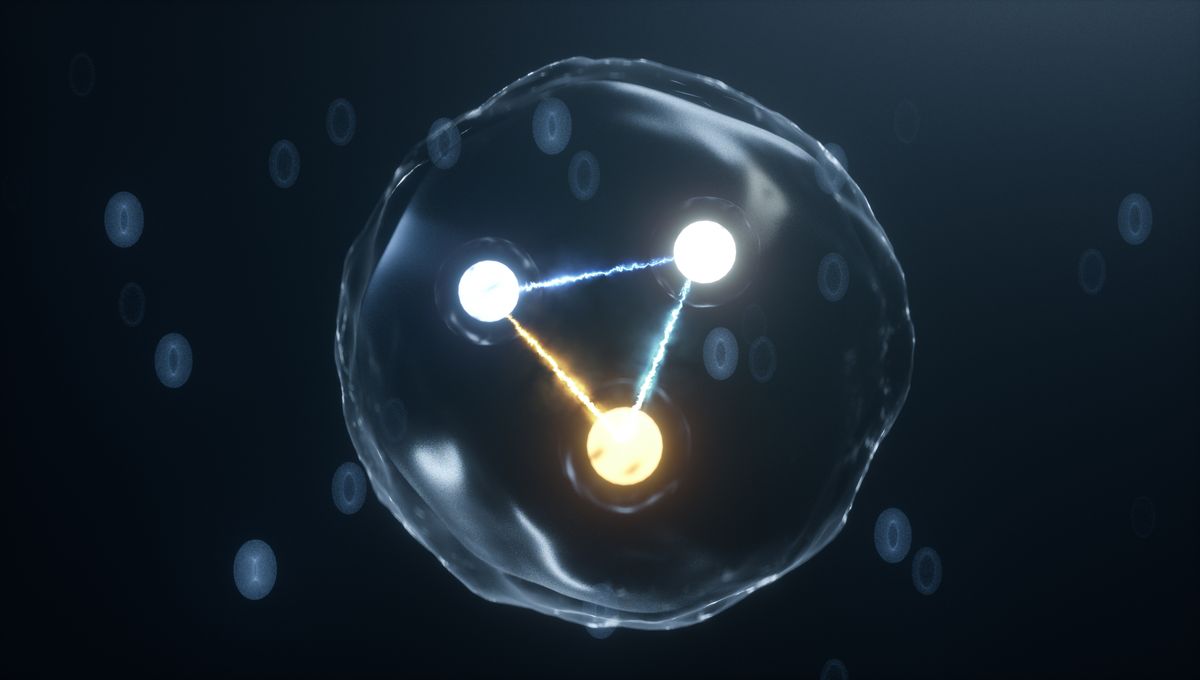
Protons sit in the nuclei of all atoms, but they are not fundamental particles: They are made of three quarks held together by the strong nuclear force. The strength of this interaction is actually more intense than electromagnetic force and immensely more intense than the gravitational pull between particles. A new study has mapped this intensity, revealing just how strong these forces can get – the forces within the protons can reach up to 500,000 Newtons (112,400 pound-force).
ADVERTISEMENT
This is about 4 percent of the thrust of the space shuttle, or the force experienced by a seatbelt if you were to hit a wall at 100 kilometers per hour (61 miles per hour). Since weight is also a force, the interaction is equivalent to the weight of 10 elephants, 5 Hubble telescopes (5 schoolbuses for an equivalent closer to home), or 4 Big Bens – the bell rather than the whole clock tower. This is an incredible force on such a tiny scale.
“Our findings reveal that even at these minuscule scales, the forces involved are immense, reaching up to half a million Newtons, the equivalent of about 10 elephants, compressed within a space far smaller than an atomic nucleus,” lead author of the study Joshua Crawford, from the University of Adelaide, said in a statement.
“These force maps provide a new way to understand the intricate internal dynamics of the proton, helping to explain why it behaves as it does in high-energy collisions, such as those at the Large Hadron Collider, and in experiments probing the fundamental structure of matter.”
The interactions between quarks within a proton and the quarks of other protons and neutrons in atomic nuclei are notoriously difficult to fully model. To bring some clarity to the problem, the team had to use a complex technique.
“We have used a powerful computational technique called lattice quantum chromodynamics to map the forces acting inside a proton,” added co-author Associate Professor Ross Young, also at the University of Adelaide.
“This approach breaks down space and time into a fine grid, allowing us to simulate how the strong force—the fundamental interaction that binds quarks into protons and neutrons—varies across different regions inside the proton.”
ADVERTISEMENT
The interest in understanding the internal structure of protons is certainly theoretical, as working out those interactions opens a window to what experiments with particle collisions can achieve. Still, there are some intriguing applications as proton beams find practical uses.
“As researchers continue to unravel the proton’s inner structure, greater insight may help refine how we use protons in cutting-edge technologies,” Young said. “One prominent example is proton therapy, which uses high-energy protons to precisely target tumors while minimizing damage to surrounding tissue.
“Just as early breakthroughs in understanding light paved the way for modern lasers and imaging, advancing our knowledge of proton structure could shape the next generation of applications in science and medicine.”
The paper is published in the journal Physical Review Letters.
Source Link: Protons' Internal Forces Are As Strong As The Weight Of 5 Schoolbuses